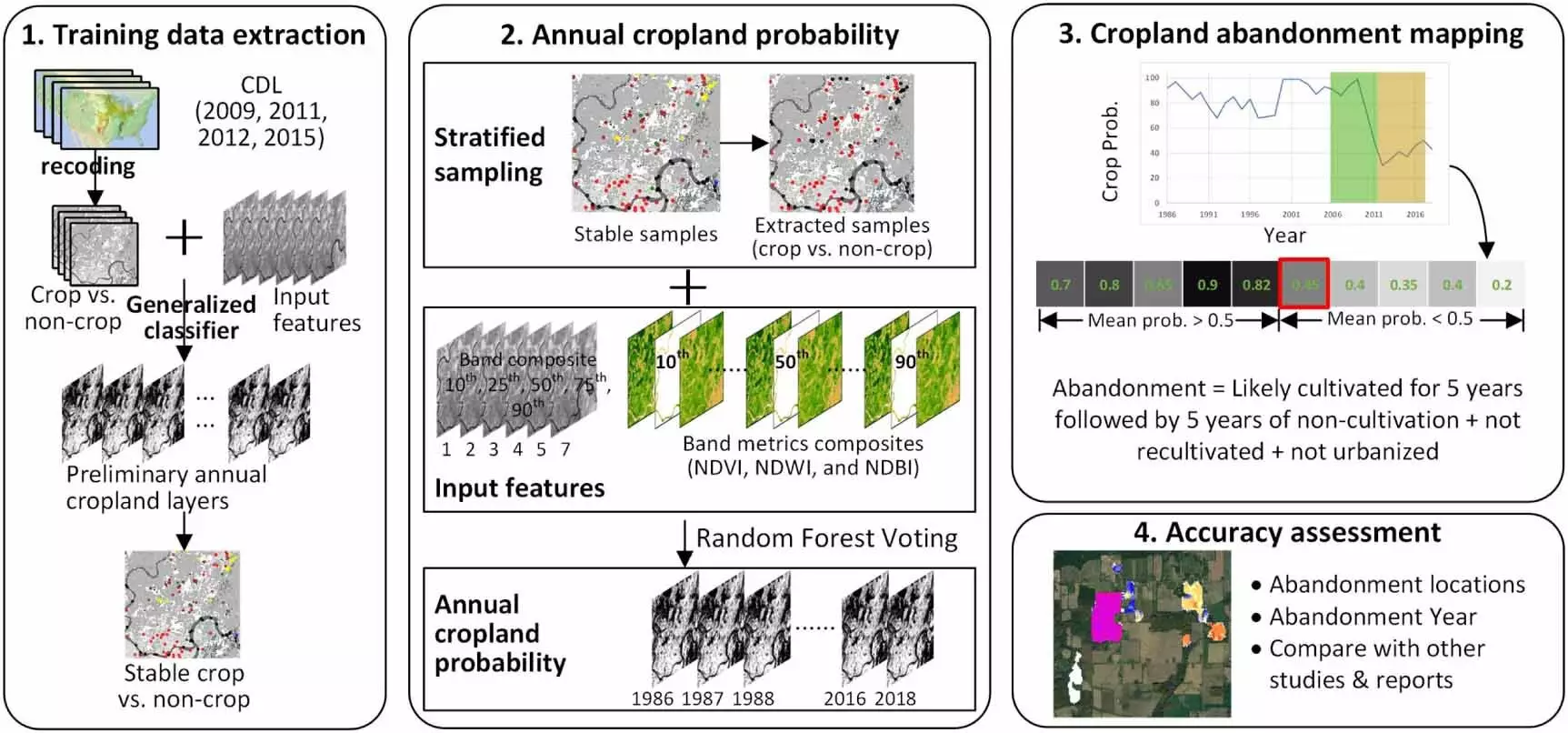In the battle against climate change, farmland often becomes a contested arena. The competition between solar panels, energy crops, and food production can create tension, while policy choices may inadvertently lead to the cultivation of new lands, releasing more heat-trapping gases. In this context, strategies for sustainable plant-based fuels concentrate on marginal lands that are not suitable for profitable yields. A recent development by scientists at the University of Wisconsin-Madison offers a potential solution by using machine learning to map nearly 30 million acres of abandoned cropland in the United States since the 1980s.
The tool developed by researchers from the Great Lakes Bioenergy Research Center provides detailed insights into previously cultivated land in the U.S. These abandoned lands could potentially be used to grow crops like switchgrass or sorghum, which can capture carbon in the soil and serve as feedstocks for biofuels and replacements for petrochemicals. This mapping allows for a better understanding of the potential of these lands in climate mitigation efforts, directing clean energy investments to areas with minimal competition from other beneficial uses.
High-Resolution Analysis of Abandoned Croplands
Traditionally, researchers have relied on county-level estimates of farmland, limiting the understanding of the exact locations and timing of land abandonment. This new tool offers a higher resolution analysis by providing field-level identification of abandoned croplands, tracing the changes from cultivation to alternative uses such as pasture, grassland, shrubland, forest, wetland, or bare land. The study revealed that more than 30 million acres of cropland were abandoned over a 32-year period, mostly concentrated in the Great Plains and along the Mississippi River.
With the availability of this data, researchers can model the potential biomass growth on these abandoned lands, as well as their capacity to sequester carbon dioxide from the atmosphere. Surprisingly, less than a fifth of the abandoned lands were enrolled in formal conservation programs, indicating a significant opportunity for bioenergy crop cultivation. By leveraging additional information, such as socioeconomic data and tax records, researchers aim to understand the drivers behind land abandonment, allowing for tailored solutions to maximize the use of these lands for sustainable bioenergy production.
The innovative approach of utilizing machine learning to map abandoned croplands opens up new possibilities for the production of sustainable plant-based fuels on lands that were previously deemed unsuitable for traditional agriculture. By unlocking the potential of marginal lands for bioenergy cultivation, researchers are paving the way for a more sustainable and climate-friendly future in the realm of renewable energy production. The insights gained from this study serve as a valuable tool for policymakers, farmers, and conservationists looking to make informed decisions on land use and energy production strategies.


Leave a Reply